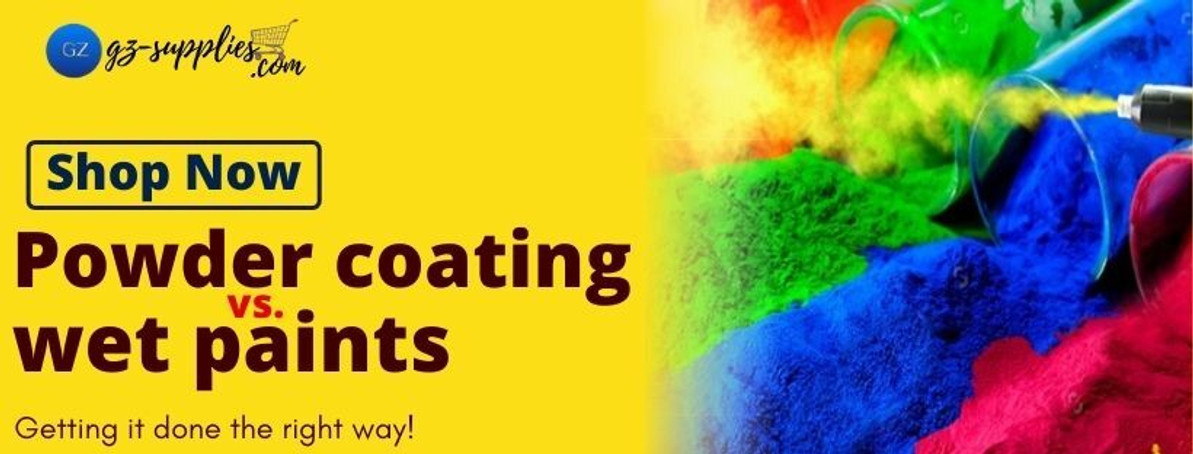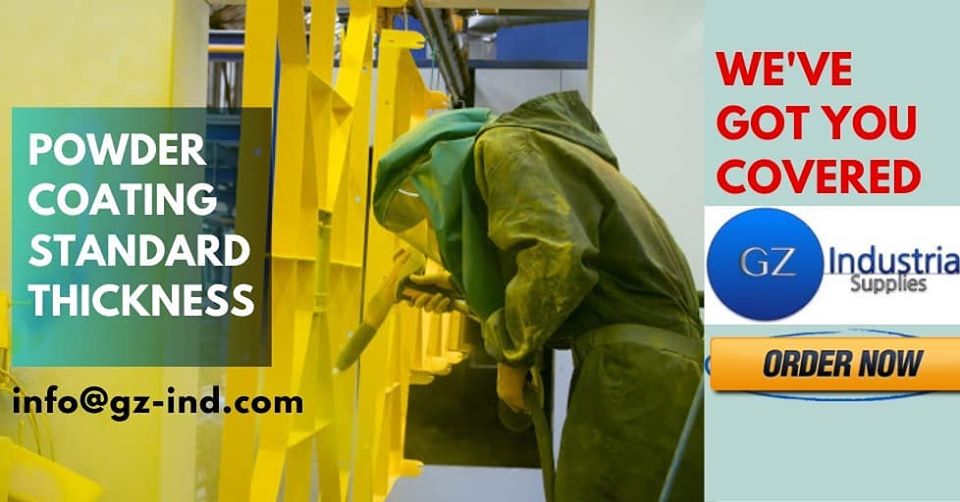Powder Coating Versus Wet Paint
Powder coating is finding its way into the heart of manufacturers in various industries. It has become a popular process for both decorative and protective finishes in manufacturing. In fact, it is used in nearly every major manufacturing business today. These include furniture, architecture, automotive, construction, home appliances steel and metal production with numerous range of textures and colors.
This article seeks to unveil the prevailing comparison between powder coating and it’s wet counterpart. Earlier pioneered in the 1950s, powder coating has evolved as a popular dry finishing process used for functional (protective) and decorative finishes in manufacturing.
POWDER COATING
Powder coating is the one of the methods that uses solid coating material totally. In powder coating, there are some parts of the ingredients that are first prepared before the main coating powder combines in the solid form and deposited directly onto the substrate. This is an environmentally friendly process compared with fluid-based coating methods since it does not use solvent, releases very low amounts of Volatile Organic Compound (VOC), and generates few waste materials or hazardous chemicals. No drying is necessary since no water is used, which may result in energy savings. Beyond its environmental attractiveness, powder coating also has unique characteristics because the particles have a high surface area. It is also possible to create rich coatings with minimal penetration.
WET PAINT
Wet painting is a traditional treatment method by which a pigment in any water-based or solvent-based paint is sprayed onto the surface of a part. Common applications of wet paint include automotive exteriors, metallic surfaces and extremely large or heavy items. When superior performance is required, powder coating as a finishing process can replace traditional wet painting.
ADVANTAGES OF POWDER COATING OVER WET PAINT
Many issues associated with wet paint finishing are eliminated or minimized with the powder coating process. The advantages of powder coating over wet paint are many, and they generally fall under these categories.
Performance :-
Powder coatings are more durable and more resistant to corrosion, chemicals and weather than liquid coatings (due to thermal bonding process). Powder-coated surfaces are more resistant to chipping, scratching and other such wear due to the thermal bonding process during curing. Unlike wet paint, powders also do not run or drip, providing a more uniform coating than liquid paint. Moreover, the vibrancy of the color of a powder-coated part tends to stay bright and fresh longer than its wet-painted counterpart. The result of using powder coating is that the product will have the most attractive, durable, high quality finish available.
2.Safety :-
Wet paint on one hand is flammable, carcinogenic and full of volatile organic compounds (VOCs). These chemicals can be hazardous to plant/shop personnel if not handled with proper safety measures. Powder coatings on the other hand, are generally VOC-free materials and contain no solvents, meaning they do not involve the potentially harmful chemicals typically found in a wet spray project. Although powder coating materials can combust in a very narrow concentration of powder and air, their lack of solvents or VOCs means almost none of the short-term and long-term health or fire workplace threats associated with wet painting.
3. Environmental :–
In a bid to reduce chemical pollution and secure our planet, most manufacturing industries are seeking environmentally friendly approaches in their production processes. VOCs in the wet painting process are also among industrial pollution concerns. Because powder coatings contain no solvents and emit negligible, if any, polluting VOCs into the atmosphere, they are more environmentally friendly than their wet paint counterparts. Moreover, powder coating is a clean process: powder overspray can be retrieved and reused, and unused powder can be reclaimed, returned and recycled through the system, with negligible waste. Plus, most powder coating materials are considered landfill/ non-hazardous materials. Powder coatings meet all Environmental Protection Agency requirements for air and water pollution control.
4. Cost :-
Powder coating is usually cheaper than wet paint in the long run, but the upfront costs tend to be higher. Wet paint technology has been around a lot longer (powder coating was developed in the 1950s), so the equipment and materials are more widely available. First, powder coatings have a much better utilization rate. Unlike liquid paint, powder can be collected and reused. Approximately 70% of paint is lost to overspray during application, while material loss of powder coating can be kept under 5%. Powder coatings can also reduce costs related to operational labor, as minimal operator training and supervision are required for a powder line. Compared to wet paint processes, operational cost savings using powder coatings can also be realized in less waste produced, lower energy costs, reduced disposal costs and less rework due to lower reject rates.
Cost is also heavily affected by safety and environmental regulation. Because it is more hazardous, wet paint requires more investment in mitigation measures and insurance premiums. Powder coating facilities can keep these costs to a minimum.
Finally, powder coating has much lower disposal costs. Less of it needs to be disposed of due to the high utilization rate, and any amount that does need to be thrown away is not subject to the same tight environmental controls as paint.
5. Texture :-
Some textures can be attained equally well by powder coating or wet paint, but others are easier to achieve with a particular medium. Textured finishes are much easier to attain with powder coats. Thinner powder coats are naturally more textured, while thicker layers are smoother. It is technically possible to attain a high-gloss finish with powder coating, but it is much easier with liquid paint.
Powder coating uses a fine powder that almost looks like baking flour in its raw state. The technical way this powder is applied results in a very smooth and consistent surface, without any brush marks, drips, or uneven areas and blemishes.
Liquid paint, whether applied by brush or from a spray can, presents more of a challenge when trying to apply a smooth and even coat. It often drips and spreads unevenly, leading to a final texture that may have a little roughness. If you want to avoid any application marks and have the smoothest possible finish, powder is the way to go.
6. Colour:-
One area in which paint has the advantage is in colour variety. There are many more color options to choose from when you select paint over powder, giving you more flexibility for how things look and making it easier to match different objects. Powder coating has many strengths, but liquid paint is the unequivocally better when it comes to color matching. Custom colors of liquid paint can be mixed on-site, and with a high degree of precision, by almost any paint supplier. A blue and red pigment can be mixed to produce purple paint.
7. Do-It-Yourself (DIY) Procedures:-
Some people love doing their painting by themselves, If you prefer to do it yourself, wet paint is the easier option. The complexity of the powder coating process makes it very challenging for anyone who is not a professional.
You can buy DIY powder-coating kits, but they are only useful for small objects. You also typically need special equipment to powder coat anything large or medium-sized, whereas painting can be done in your own home or backyard very easily.
Similarities between Powder Coating and Wet Paint
- Powder coating and paint are similar, each containing resin, color pigments, and other additives. Paint additionally has solvent.
- Both paint and powder are vulnerable to chalking when exposed outside for a long time, resulting in a faded appearance.
Summary
Powder Coating Pros
- Smoother texture
- Only one application needed
- More durable
- Longer-lasting
- Safer and easier to store
- Eco-friendly
- Excess powder can be reused
Powder Coating Cons
- Smaller range of colors
- Best done by pros
- Seem expensive upfront
Wet Paint Pros
- More color options
- Easy for DIY
- Cheaper
- More accessible
Wet Paint Cons
- Uneven texture
- Less resistant
- Contains VOCs
- More wasteful
- Harder to store
- Does not support recycling
Contact Us for further information, procurement and services about powder coating
Recent Posts
-
The Best Transformer prices in Nigeria
A transformer facilitates the delivery of electrical energy at minimum power loss. The best and affo …Apr 18, 2024 -
Eco-Friendly Industrial Chemicals: The Future of Sustainability in Manufacturing
In the face of escalating environmental concerns, sustainability in the use of industrial chemicals …Apr 17, 2024 -
Innovative Features of Dongcheng Percussion Hammers
Power tools like percussion hammers are used in the construction and demolition industries for break …Apr 17, 2024






